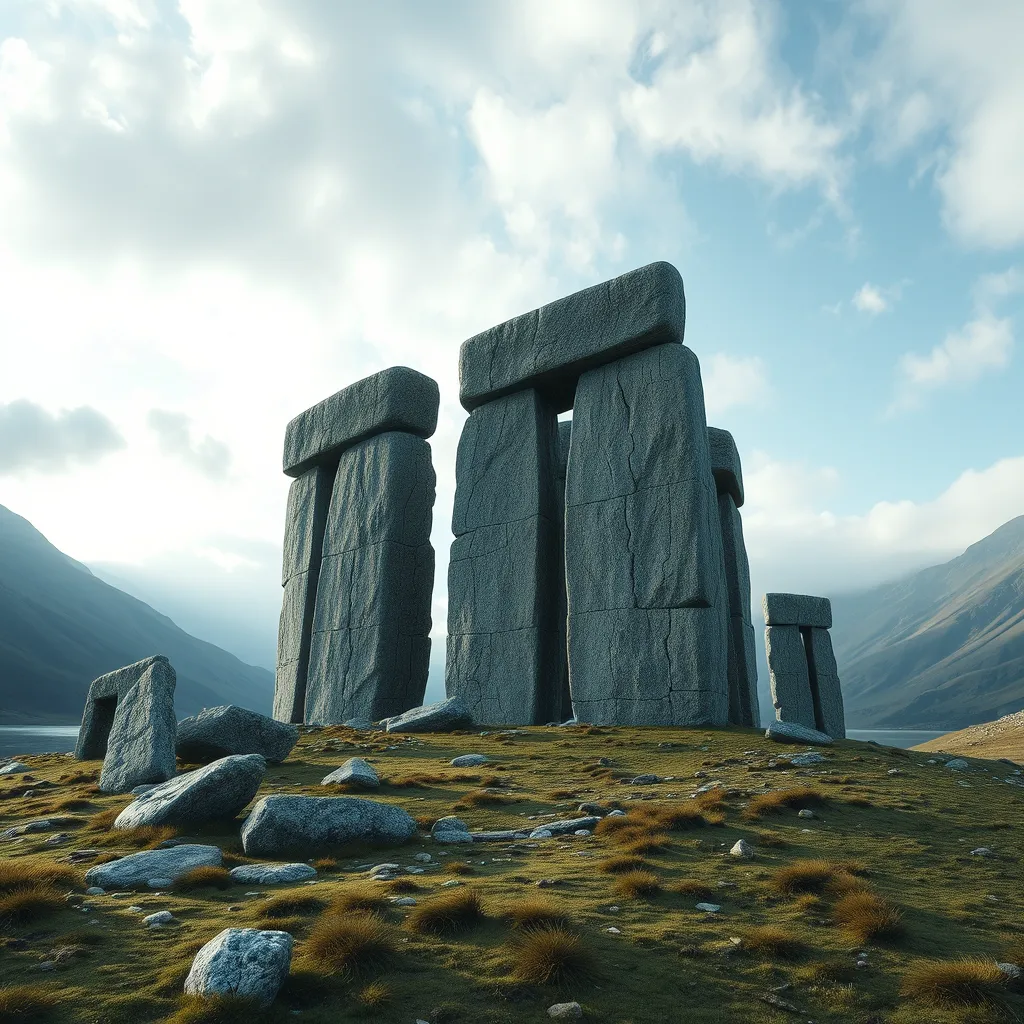The Stone Giants of the North: Building Myths and the Power of Nature
I. Introduction
The myth of the Stone Giants has captivated the imaginations of many throughout history. These colossal figures, often depicted as guardians of the land, embody the strength and resilience found within nature itself. This myth is not merely a tale but a reflection of humanity’s deep-rooted connection to the environment. In this article, we will explore the origins, symbolism, and modern relevance of the Stone Giants, and how they serve as a bridge between culture and nature.
II. The Origins of the Stone Giants Myth
The origins of the Stone Giants myth can be traced back to the rugged landscapes of the North, where towering mountains and vast wilderness inspire awe and respect. Historical context reveals that these giants were not just figments of imagination but were influenced by the natural formations observed by ancient peoples.
- Historical Context: The myth stems from the geographical significance of stone formations, which early cultures personified as giants.
- Indigenous Stories: Many indigenous tribes have their unique stories about these giants, passed down through generations via oral traditions.
- Evolution of the Myth: Over centuries, the narrative of the Stone Giants has evolved, adapting to cultural changes and environmental shifts.
III. The Symbolism of Stone Giants
Stone Giants serve as powerful symbols within their respective cultures. They embody various meanings that resonate with human experiences and natural phenomena.
- Strength and Endurance: The immovable nature of stone represents durability, a quality admired by many cultures.
- Connection to the Natural World: These giants are often seen as embodiments of the landscapes they inhabit, representing a deep bond with nature.
- Protector vs. Destroyer: While they can symbolize protection of the land, they also evoke fear, reminding people of nature’s potential for destruction.
IV. Nature’s Role in the Creation of Myths
Nature plays a crucial role in shaping myths and narratives. The interplay between the environment and storytelling has led to rich cultural tapestries across the globe.
- Influence of Natural Phenomena: Events such as storms, earthquakes, and volcanic eruptions have often inspired myths, leading to the personification of these forces as giants.
- Cultural Identity: The local landscape deeply influences the cultural identity of communities, shaping their myths and legends.
- Case Studies: Other myths, such as those surrounding mountain gods or river spirits, illustrate similar relationships between nature and narrative.
V. The Stone Giants in Modern Culture
In contemporary society, the Stone Giants have found new life in various forms of media and art. Their stories continue to resonate with audiences, reflecting timeless themes.
- Literature and Media: The giants have appeared in books, films, and television series, often representing the struggle between humanity and nature.
- Artistic Interpretations: Artists have depicted these figures in various forms, from sculptures to paintings, exploring their dual nature as protectors and destroyers.
- Contemporary Relevance: The Stone Giants remind us of our responsibilities towards nature and the environment in an age of climate change.
VI. Environmental Significance of the Stone Giants
The myth of the Stone Giants transcends mere storytelling; it reflects pressing environmental concerns and inspires conservation efforts.
- Reflection of Environmental Concerns: The giants symbolize the balance between human activity and nature, highlighting the need for sustainable practices.
- Conservation Efforts: Many conservation initiatives draw inspiration from folklore, using the narrative of the Stone Giants to promote environmental awareness.
- Inspiration for Future Generations: These myths encourage younger generations to value and protect their natural heritage.
VII. Comparative Myths: Stone Giants in Other Cultures
Exploring the concept of stone giants in different cultures reveals both similarities and differences that enrich our understanding of global mythologies.
- Similarities and Differences: Many cultures feature giant figures, but their roles and characteristics can vary significantly.
- Universal Themes: Common themes such as strength, protection, and the relationship with nature can be found across various myths.
- Lessons Learned: Cross-cultural comparisons provide insight into how different societies interpret their environment and the lessons they impart.
VIII. Conclusion
The enduring power of myths like the Stone Giants helps us understand the complex relationship between nature and humanity. These legends not only provide insight into ancient cultures but also serve as a reminder of the importance of preserving our natural world. As we reflect on the legacy of the Stone Giants, let us embrace the call to action: to protect both our myths and the environment for future generations, ensuring that the stories of our giants continue to inspire.



